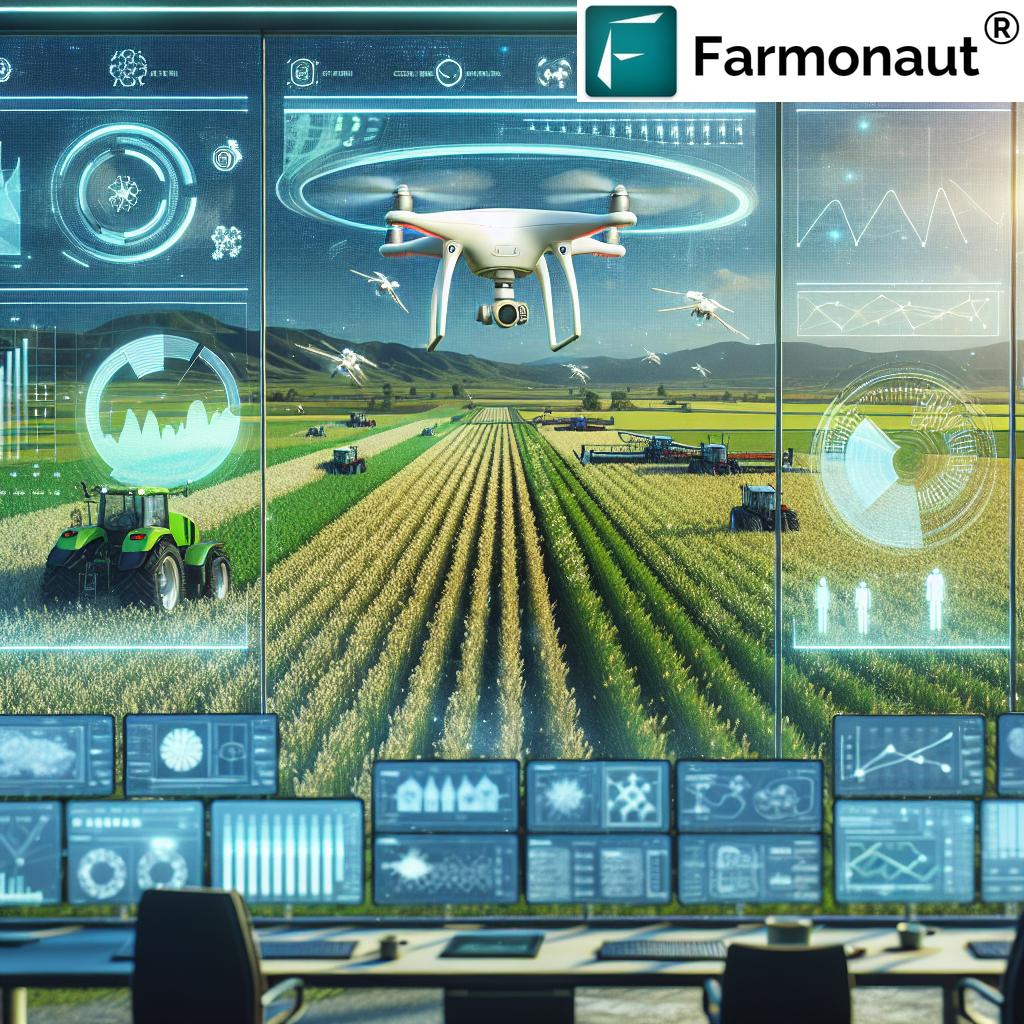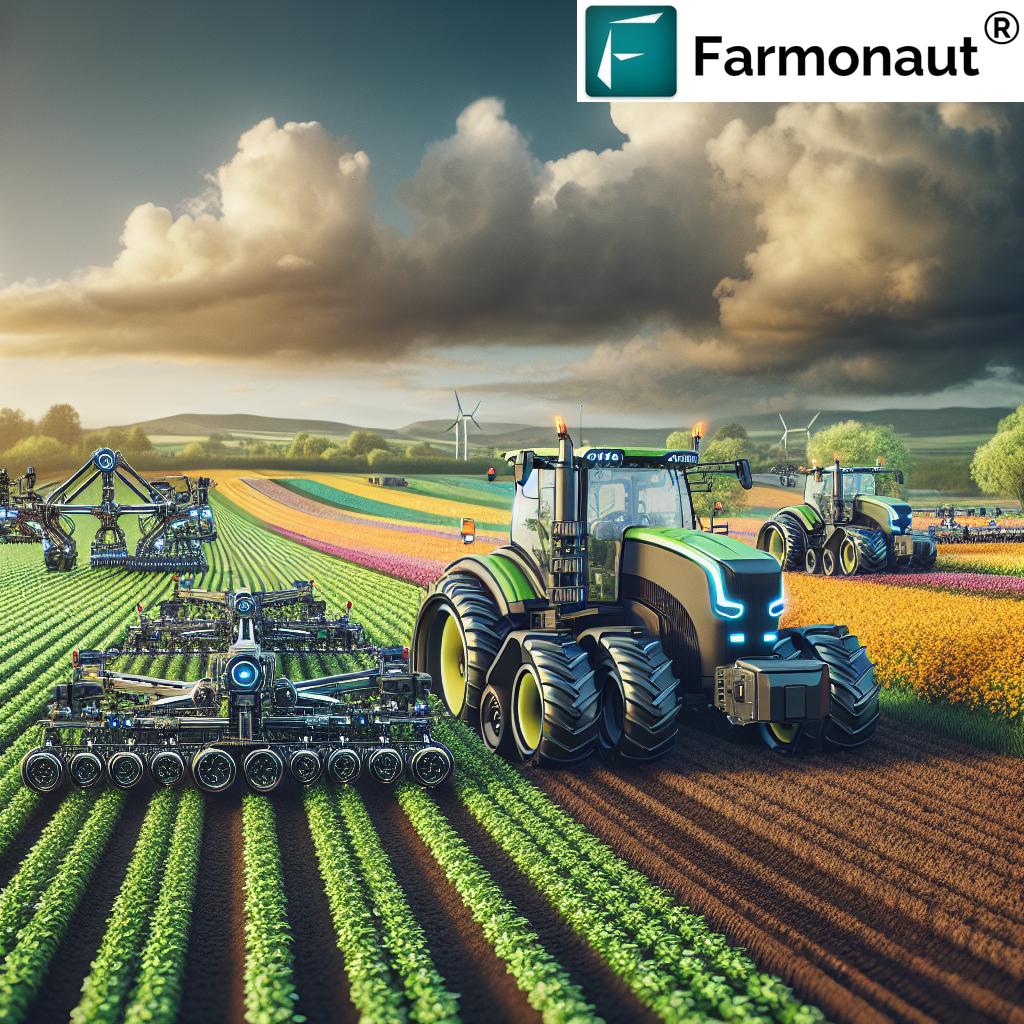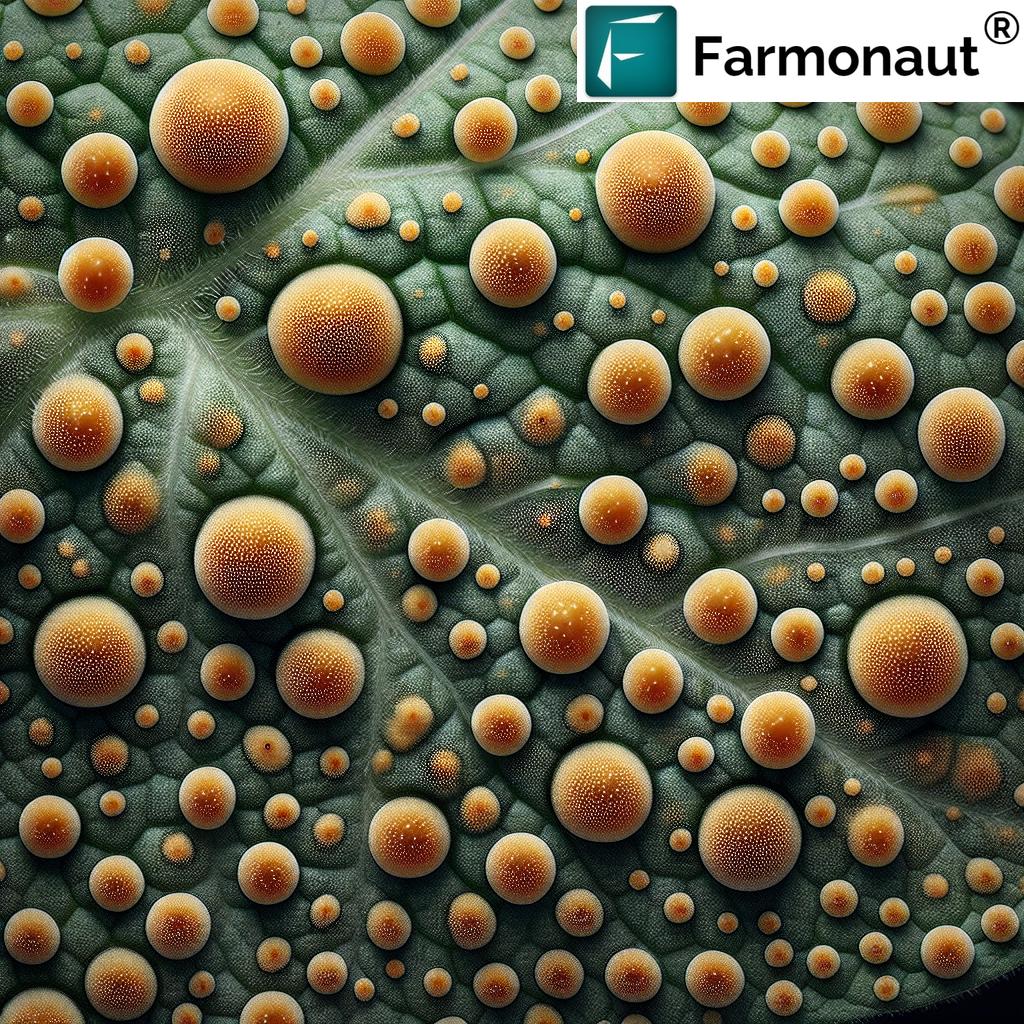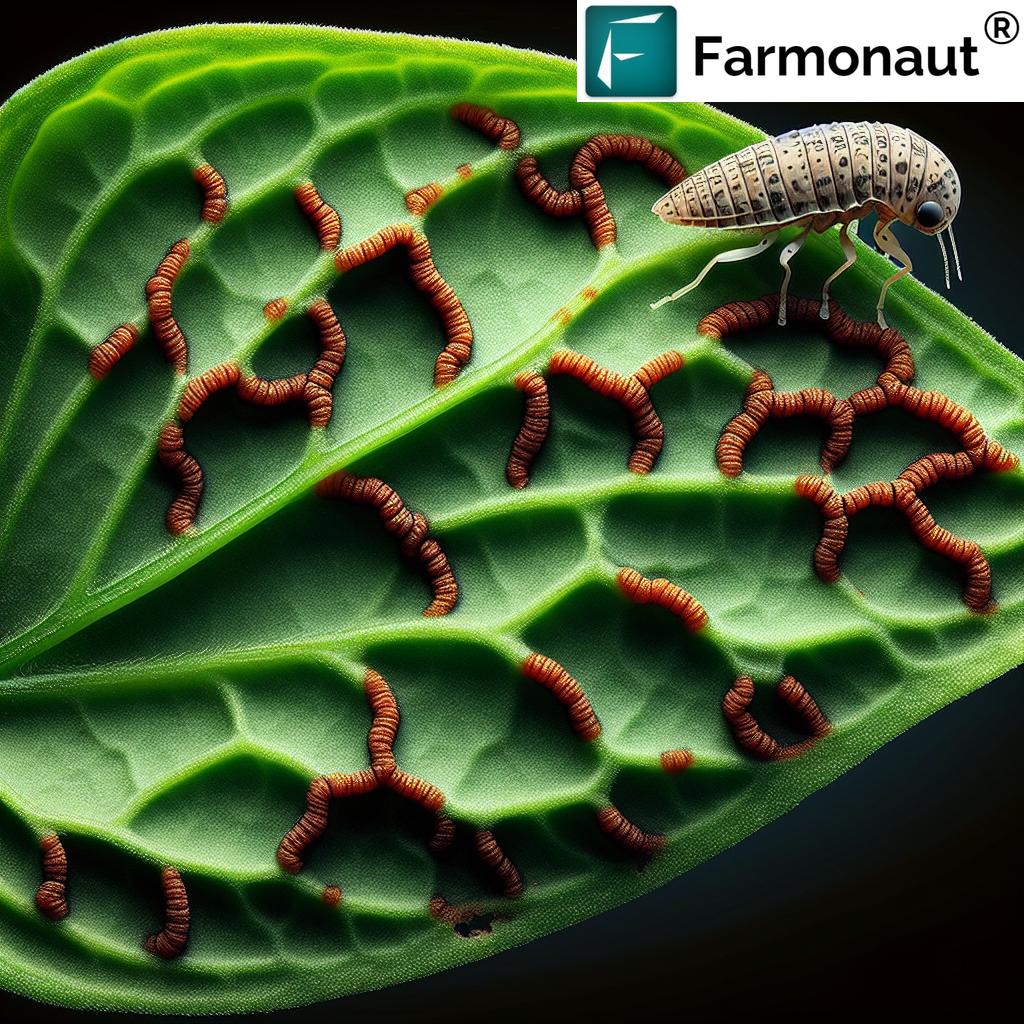AI Agents in Precision Agriculture: Crop Innovation 2025
“Over 80% of precision agriculture operations will involve AI agents by 2025, streamlining data-driven crop management.”
Introduction: Ushering in a New Era of Precision Agriculture
In recent years, the agricultural sector has been revolutionized by the integration of AI agents and advanced drones, driving a transformative shift that affects nearly every aspect of crop production and farm management. As we enter 2025, these innovations have become pivotal in addressing global challenges—from climate change and resource scarcity to the unpredictable demand for food production—while also actively working towards minimizing environmental impacts.
AI agents in precision agriculture bring together advanced machine learning, computer vision, and data analytics, enabling real-time, data-driven decision making that optimizes resource use and boosts crop health. The synergetic integration of drones (drones en agricultura de precision), sensors, and satellites enables previously unthinkable efficiency and productivity—heralding a new era of sustainability and resilience in agriculture.
In this in-depth exploration, we examine how these technologies are redefining precision agriculture in 2025 and beyond, analyzing the critical role of AI agents, drones, satellites, and multi-sensor systems in optimizing all aspects of farming.
Precision Agriculture 2025: Defining the Field & Focus Keyword Importance
Precision agriculture in 2025 refers to the use of cutting-edge technology, data, and AI agents to manage fields at the level of individual plants, rather than using blanket applications across entire fields. This approach is fundamentally data-driven and aims to optimize field-level management regarding crop growth, resource allocation, and environmental conservation.
- Core Focus: Bringing together sensors (multispectral, hyperspectral, thermal), AI-based models, satellites, and UAVs/drones for targeted monitoring and interventions
- Objectives: Maximizing yield, minimizing input costs, supporting sustainability, and strengthening resilience to weather and climate challenges
- Methods: Leveraging AI-driven analytics, real-time data processing, and predictive modeling for early detection, targeted action, and resource efficiency
The integration of AI agents in precision agriculture Elsevier papers and global research summary show that, by 2025, reliance on these innovations has fundamentally changed traditional farming methods and continues to shape the agricultural landscape for years to come.
AI Agents & Drones: Transforming Crop Management Systems
Recent advancements in AI agents and drone technology have driven a wave of innovations in agricultural systems:
- AI Agents: Software equipped with machine learning, advanced algorithms, and computer vision process vast amounts of data collected from multiple sources—including satellites, UAVs (unmanned aerial vehicles), and sensors—to enable critical real-time decision making.
- Drones en agricultura de precision: Drones have emerged as one of the most transformative tools for monitoring crop health and optimizing resource use. Equipped with multispectral, hyperspectral, and thermal imaging sensors, these UAVs can capture high-resolution images and analyze entire fields in a fraction of the time and cost required by manual inspections.
- Synergy: The combination of AI-powered drone data analysis with actionable recommendations (nutrient deficiencies, pest infestations, water stress, etc.) brings resource optimization and environmental conservation to unprecedented levels of efficiency.
The interactions between these technologies are not isolated. Rather, they are interconnected—forming a robust network of monitoring, processing, and targeted intervention for modern agriculture in 2025.
Comparative Benefits Table: AI Agents, Drones, and Traditional Methods
| Technology | Main Function | Example Application | Estimated Efficiency Improvement (%) | Sustainability Impact |
|---|---|---|---|---|
| AI Agent | Real-Time Crop Monitoring, Predictive Analytics | Disease/Pest Detection, Yield Forecasting | Up to 25% increase in yield, 30% resource savings | High |
| Drone | Aerial Imaging & Targeted Interventions | Field Mapping, Irrigation Adjustment | 20% labor cost reduction, 18% input use reduction | Medium – High |
| Traditional Method | Manual Scouting & Blanket Applications | Field Walkthroughs, Uniform Fertilizer Spread | Baseline | Low |
This comparative table illustrates how AI agents in precision agriculture, drones, and traditional methods stack up on functionality, application, efficiency, and sustainability. By 2025, the compelling advantages of AI and UAV integration are clear—enabling precise, targeted actions while minimizing resource use and environmental impacts.
“AI-powered drones can analyze up to 400 acres of farmland daily, transforming agricultural decision-making.”
Precision Monitoring & Data Analytics in Crop Health
The heart of AI-powered precision agriculture lies in continuous crop health monitoring and dynamic data analytics. Drones en agricultura de precision carry multispectral, hyperspectral, and thermal sensors that capture images and detect subtle changes across large tracts of farmland. Within moments, AI agents can use machine learning models to:
- Analyze Patterns: Identify emerging nutrient deficiencies, pest infestations, or disease outbreaks—even when not visible to the naked eye
- Issue Alerts: Enable early interventions by sending notifications or detailed reports to farm operators
- Optimize Actions: Recommend precise fertilizer or pesticide applications only where needed, reducing both costs and environmental burden
- Track Progress: Continuously monitor recovery or further developments, adapting strategies as needed for ongoing resource optimization
These processes enable smart, sustainable decision making—shifting from reactive to predictive crop management.
Precision monitoring supported by Farmonaut’s AI-based satellite advisory systems equips farms of all sizes to access insights from space, offering a real-time understanding of plant health, soil moisture, and field variability. This democratizes access to advanced technology, supporting informed interventions for increased yield and sustainability.
Barn Owl Precision Agriculture: Sensor Advancements & Nocturnal Monitoring
A notable example in 2025’s innovative landscape is the Barn Owl precision agriculture system. These platforms incorporate AI-driven drones specifically designed for nocturnal crop monitoring:
- Equipped with advanced thermal imaging sensors and pattern recognition AI models
- Capable of identifying diseases, rodent activity, and pest infestations that often emerge undetected during the night
- Designed for variable weather regions where early detection is critical for rapid response and yield protection
Such specialized drones offer significant benefits beyond traditional monitoring methods, providing continuous vigilance in regions where environmental factors and pests pose high risks to production.
AI algorithms analyze data captured by these drones to detect subtle changes—perhaps a slight increase in ground temperature indicating rodent activity, or the emergence of water stress patterns in specific field segments. These systems maximize efficiency and productivity by enabling early interventions, reducing the need for blanket pesticide applications, and implementing targeted resource use.
AI-Driven Resource Management: Water, Irrigation & Soil
As climate change brings increasing water scarcity and fluctuating weather patterns, AI agents play a critical role in optimizing irrigation management and conserving vital resources. Advanced algorithms now integrate satellite-derived weather forecasts, soil moisture data, and evapotranspiration rates to deliver AI-driven irrigation schedules:
- Optimal Water Use: Ensuring water is applied only where and when needed, boosting efficiency, productivity, and crop health
- Soil Monitoring: Multisource data fusion allows real-time detection of soil imbalances or erosion risks
- Nutrient Management: Identifying nutrient deficiencies and delivering targeted fertilizer applications reduces waste and minimizes environmental impact
With platforms like Farmonaut’s carbon footprinting, farms can track environmental impacts (such as emissions) associated with irrigation, fertilizer use, and general operations—encouraging sustainable practices and improving regulatory compliance.
In 2025, AI-enabled drones even facilitate seed planting and variable-rate field mapping. By analyzing soil variability and applying tailored seed/fertilizer mixtures, yield is maximized while waste is minimized—pushing productivity to new highs without sacrificing sustainability.
Satellite Imagery & Sensor Integration: Unleashing Multi-Source Data
The integration of satellites with AI agents and drones brings truly global reach and comprehensive data collection for precision agriculture in 2025. Through seamless multi-source data fusion:
- Real-time monitoring across large tracts of farmland becomes achievable
- Vast amounts of data are processed by AI-driven analytics to deliver actionable insights
- Complex analytics (e.g., for plant stress or yield optimization) are delivered directly to operators, enabling dynamic management
This level of automation and insight sets a new standard. Platforms such as Farmonaut’s large scale farm management system further empower farmers, cooperatives, and agri-operators to implement such advanced systems at scale, with real-time data access and field-specific recommendations.
Farmonaut: Enabling Accessible Technological Innovation
At Farmonaut, we believe that affordable and accessible satellite-powered technology is the key to unlocking the full potential of AI agents in precision agriculture. Our platform combines:
- Satellite-based monitoring—offering multispectral and thermal crop and soil insights for resource management
- AI-powered advisory systems—delivering real-time, tailored strategies and predictive analytics for optimal yield and input use
- Blockchain-based traceability—building transparency throughout the supply chain (explore our product traceability solution for detailed benefits)
- Fleet & resource management—helping businesses schedule, deploy, and track machinery efficiently (learn about our fleet management system)
- Environmental monitoring—including real-time carbon emission tracking and NDVI insights
Our web and mobile apps bring these services to farms, agribusinesses, governments, and financial institutions worldwide. With API access and API developer docs, you can seamlessly integrate satellite & AI-driven data into your own tools and workflows:
- Farmonaut Satellite API – for real-time crop monitoring and environmental analytics.
- API Developer Documentation – to learn how our AI and satellite insights can power your own precision agriculture solutions.
For those seeking financial security, our satellite-based crop loan and insurance verification helps banks and insurers reduce fraud and streamline loan approval processes using verified crop health and field data.
Future Trends & Remaining Challenges in Precision Agriculture
While AI agents and drone technology are revolutionizing agriculture in 2025, continued innovation and global research remain crucial. Recent Elsevier papers focus on:
- Developing more robust predictive models for both crop yield forecasting and pest/disease management
- Refining integration of multi-source data from satellites, drones, and in-field sensors
- Automating farm management tasks (e.g., autonomous seeding, fertilizer delivery, and weed control) beyond monitoring
- Addressing accessibility issues—ensuring technology adoption even in remote or resource-limited regions
- Upholding data security, transparency (leveraging blockchain), and regulatory compliance in precision agriculture systems
For environmental protection and food security, robust systems such as Farmonaut’s crop, plantation, and forest advisory services empower public and private sector stakeholders to manage landscapes and agricultural ecosystems more responsibly.
Meanwhile, ongoing innovation in AI models trained on global agricultural data will foster greater accuracy, resilience to climate change, and operational scalability.
FAQ: AI Agents & Drones in Precision Agriculture 2025
How do AI agents improve crop monitoring compared to traditional methods?
AI agents analyze data from satellites, drones, and sensors in real time, enabling early detection of plant health issues and targeted interventions. This level of precision leads to higher yields, fewer losses, and reduced environmental impact compared to traditional manual inspections and blanket treatments.
What role do drones en agricultura de precision play in resource efficiency?
Drones collect high-resolution multispectral and thermal images of large fields, allowing for precise mapping and resource allocation. Their data drives variable-rate application of water, fertilizer, and pesticides, cutting costs and minimizing waste.
Why is integration of AI and satellite data important in 2025?
Combining AI with satellite imagery ensures global scalability, multi-field comparisons, and rapid coverage. This integration allows for informed, data-driven decisions at scale—crucial in addressing global food demand and environmental challenges.
What are the benefits of Barn Owl precision agriculture?
Barn Owl systems merge nocturnal drone monitoring with AI pattern recognition to spot diseases, rodent activity, and pest outbreaks that are often missed during daytime inspections. This technology enables earlier action and improved crop protection, especially in high-risk or variable weather regions.
How does precision agriculture support sustainability?
Precision agriculture—through targeted input use, reduced chemical applications, and improved monitoring—minimizes environmental impacts, conserves water, and supports soil health. AI agents and drones are pivotal in enabling these sustainable practices.
How does Farmonaut help users access AI-powered crop monitoring?
We offer a cloud-based platform accessible via web, Android, and iOS apps, delivering AI-driven advisories, real-time monitoring, traceability, resource management, and API integration—all designed to scale from small farms to large enterprises and governments.
Where can I find API documentation and developer tools?
Access the Farmonaut API Developer Documentation and connect to our real-time satellite APIs for seamless data integration.
Conclusion: Cultivating Resilience, Efficiency, and Sustainability
By 2025 and beyond, the integration of AI agents, advanced drones, and satellite imagery in precision agriculture is far more than a technological leap; it represents a paradigm shift for crop innovation, resource conservation, and environmental sustainability on a global scale.
As AI agents in precision agriculture Elsevier papers and international research consistently emphasize, the journey toward resilient, optimal, and sustainable food production systems is powered by continued investment in accessible, data-driven technology. Drones, sensors, and AI-driven analytical platforms will remain at the heart of this ongoing transformation, unlocking potential for all—from individual farmers to massive agricultural enterprises and government agencies.
For those seeking to take control of their agricultural data, optimize resources, and drive sustainability forward, AI-powered precision agriculture is not just the future. It’s here—and it’s accessible, insightful, and transformative.














